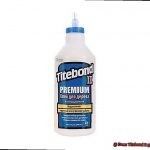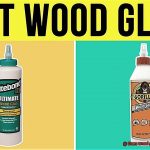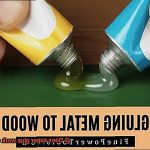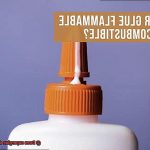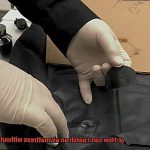Today, we’re diving into the world of DIY enthusiasts and tackling a burning question: Does super glue hold up outdoors? Picture this: you’re fixing a garden ornament, patching up a broken fence, or getting crafty with an outdoor project.
The durability of super glue could be a total game-changer. But here’s the real question: can it withstand the unpredictable forces of nature?
In this article, we’ve got all the insights, tips, and tricks you need to know about using super glue in the great outdoors
Let’s get started.
What is Super Glue?
Contents
Super glue, also known as cyanoacrylate adhesive, is a remarkable adhesive solution that has gained widespread popularity since its invention in the 1940s. Developed by Dr. Harry Coover, this fast-acting adhesive has become a go-to choice for bonding various materials together. Join us as we explore the wonders of super glue and discover why it is a true marvel in the world of adhesives.
Unleashing the Power of Super Glue:
What sets super glue apart is its ability to cure rapidly upon exposure to moisture in the air. This single-component adhesive comes in liquid form, packed conveniently in tubes or bottles. With its low viscosity, it effortlessly seeps into narrow gaps and cracks, ensuring a robust and secure bond.
Versatility at Its Finest:
Prepare to be amazed by the versatility of super glue. It can bond an extensive range of materials, including metal, plastic, rubber, ceramics, wood, and even some fabrics. Whether you’re fixing a broken ornament or assembling intricate crafts, super glue proves to be your trusty companion on any project.
The Science Behind the Bond:
Let’s dive into the scientific wizardry behind super glue’s bonding process. Upon contact with moisture, the adhesive undergoes a chemical reaction called polymerization. This reaction occurs at lightning speed, forming long chains of molecules that intertwine with the surface material. Depending on the formulation, the reaction can take place within seconds or minutes.
Unlocking Unbreakability:
Super glue’s exceptional strength lies in the intermolecular forces it creates between its molecules and the surface material. These forces include van der Waals forces, dipole-dipole interactions, and hydrogen bonding. The durability of the bond depends on factors such as surface area, cleanliness, and compatibility between the adhesive and the material being bonded.
Understanding Limitations:
While super glue is a remarkable adhesive, it does have its limitations. Surfaces contaminated with oil, grease, or dirt may hinder its effectiveness. Additionally, certain plastics and materials with low surface energy may require specialized adhesives tailored to their unique properties. It’s essential to consider these factors for optimal bonding.
Conquering the Great Outdoors:
Can super glue withstand the test of Mother Nature? While it excels on non-porous surfaces like metal and plastic, porous materials such as wood or fabric may pose challenges. For enhanced durability and resistance to weather conditions, consider using specialized outdoor adhesives like epoxy or polyurethane.
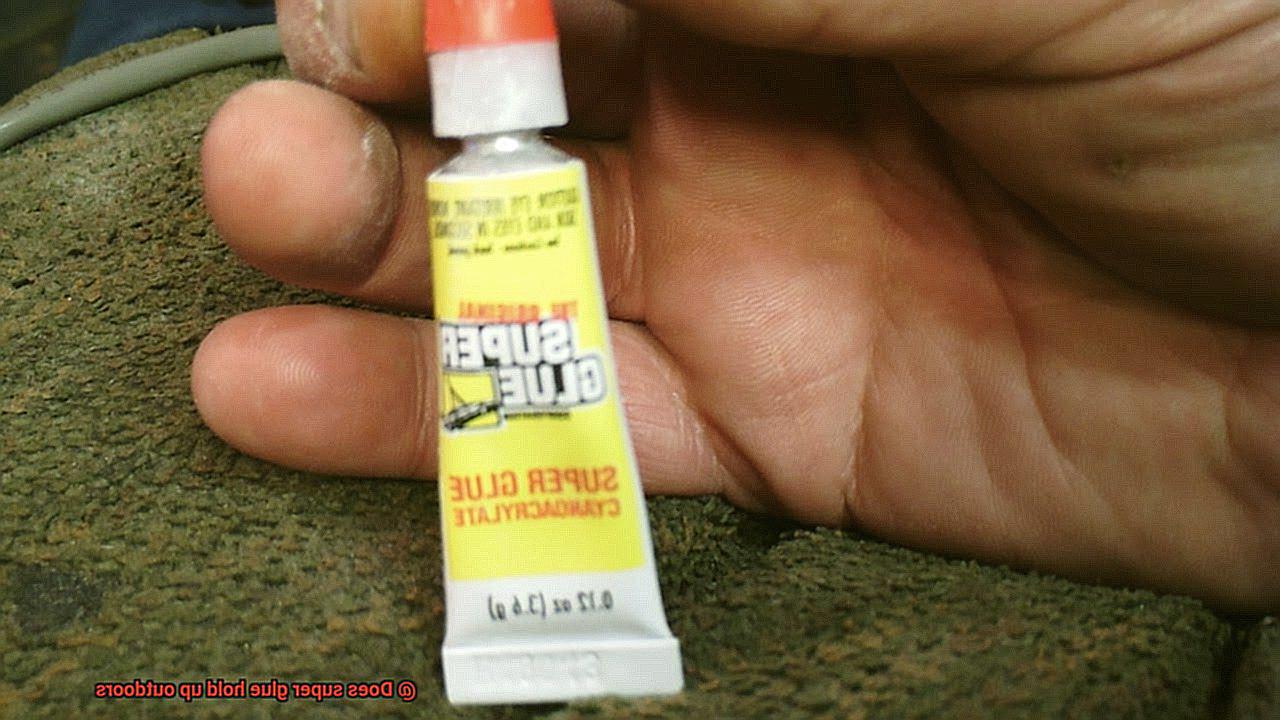
Types of Surfaces for Outdoor Use
When it comes to outdoor DIY projects, choosing the right adhesive is crucial for a strong and long-lasting bond. In this article, we will explore the types of surfaces commonly found outdoors and their compatibility with super glue. From metal to wood, plastic to glass, and concrete to ceramic, understanding the characteristics of each surface will help you make informed decisions for your outdoor projects.
Metal Surfaces:
Super glue is the go-to adhesive for bonding metal surfaces in outdoor projects. Whether you’re fixing garden ornaments or assembling patio furniture, super glue forms a strong bond that can withstand the test of time. However, it’s important to ensure that the metal surface is clean and free from dirt, grease, or rust before applying the glue. This will maximize its effectiveness and ensure a secure bond.
Wood Surfaces:
While super glue can be used on wood surfaces, it may not be the best choice for long-term outdoor projects. Wood naturally expands and contracts with temperature changes, which can weaken the bond created by super glue over time. To ensure a durable bond for outdoor wood projects, consider using specialized outdoor adhesives or alternative fasteners like screws or nails.
Plastic Surfaces:
Plastic surfaces are commonly found outdoors in items like garden pots, toys, or furniture. Super glue can work well on certain types of plastics such as PVC and acrylic. However, not all plastics are compatible with super glue, as some have low surface energy that makes it challenging for the adhesive to create a strong bond. Before using super glue on plastic surfaces, it’s recommended to test the adhesive on a small area first to ensure compatibility.

Glass Surfaces:
Super glue is an excellent choice for bonding glass surfaces outdoors. Whether you’re repairing a cracked window or creating a beautiful glass mosaic, super glue provides a strong and reliable bond. Before applying the glue, make sure the glass surface is clean and free from any oils or residues that may interfere with adhesion. Remember that outdoor glass surfaces may be exposed to extreme temperatures, which can affect the strength of the bond.
Concrete Surfaces:
Concrete surfaces like sidewalks or patios require specialized adhesives designed for outdoor use. Super glue is not recommended for bonding concrete surfaces due to their porous nature and exposure to moisture. Look for adhesives specifically formulated for concrete projects, as they will provide a stronger and more durable bond in outdoor environments.
Porous Surfaces and Moisture Absorption
If so, you’ve likely encountered the challenge of finding the perfect adhesive for porous surfaces. In this comprehensive exploration, we will unveil the impact of moisture absorption on the effectiveness of super glue when used outdoors on porous surfaces. So, gather your tools and prepare to delve into the realm of boundless possibilities.
Understanding Porous Surfaces:
Porous surfaces are akin to nature’s secret treasure troves, boasting tiny holes or spaces that eagerly absorb substances like water, air, or liquids. These materials, such as wood, concrete, and fabric, become portals for infiltration. However, when it comes to super glue applications on these surfaces, the story takes a twist.
The Impact of Moisture Absorption:
Moisture absorption stands as an eminent adversary when employing super glue on porous surfaces in outdoor settings. Porous materials have a knack for absorbing moisture from their surroundings, causing the bond of super glue to wither and fade over time. Consequently, the once-mighty glue succumbs to degradation, rendering it less effective in its noble task of uniting objects.
Other Factors to Consider:
While moisture poses a formidable challenge, it is not the sole nemesis that plagues super glue on outdoor porous surfaces. The battlefield is fraught with additional adversaries including temperature fluctuations, unrelenting UV exposure, and harsh weather conditions. Thus, choosing a super glue variant specifically formulated to withstand these trials emerges as an indispensable decision.
Tips for Enhancing Durability:
To bolster the resilience of super glue on outdoor porous surfaces, meticulous surface preparation holds the key. Thoroughly cleansing the surface and banishing any traces of dirt, debris, or remnants of previous adhesive endeavors is paramount. Moreover, employing a primer tailored for bonding porous materials can significantly bolster the glue’s adhesion, empowering it to defy the forces of nature.
Choosing the Right Super Glue:
When embarking on an odyssey that demands super glue’s prowess on outdoor porous surfaces, opt for the noble guardians of waterproof or weather-resistant variants. These extraordinary formulations outshine their standard counterparts, displaying a remarkable resilience against moisture and the relentless assault of inclement outdoor conditions.
Consider Alternatives:
While super glue may not always reign supreme in all outdoor applications on porous surfaces, do not despair. A realm of specialized adhesives awaits your exploration. These extraordinary alternatives are meticulously crafted to thrive under such conditions, ensuring a bond that is resolute and everlasting.
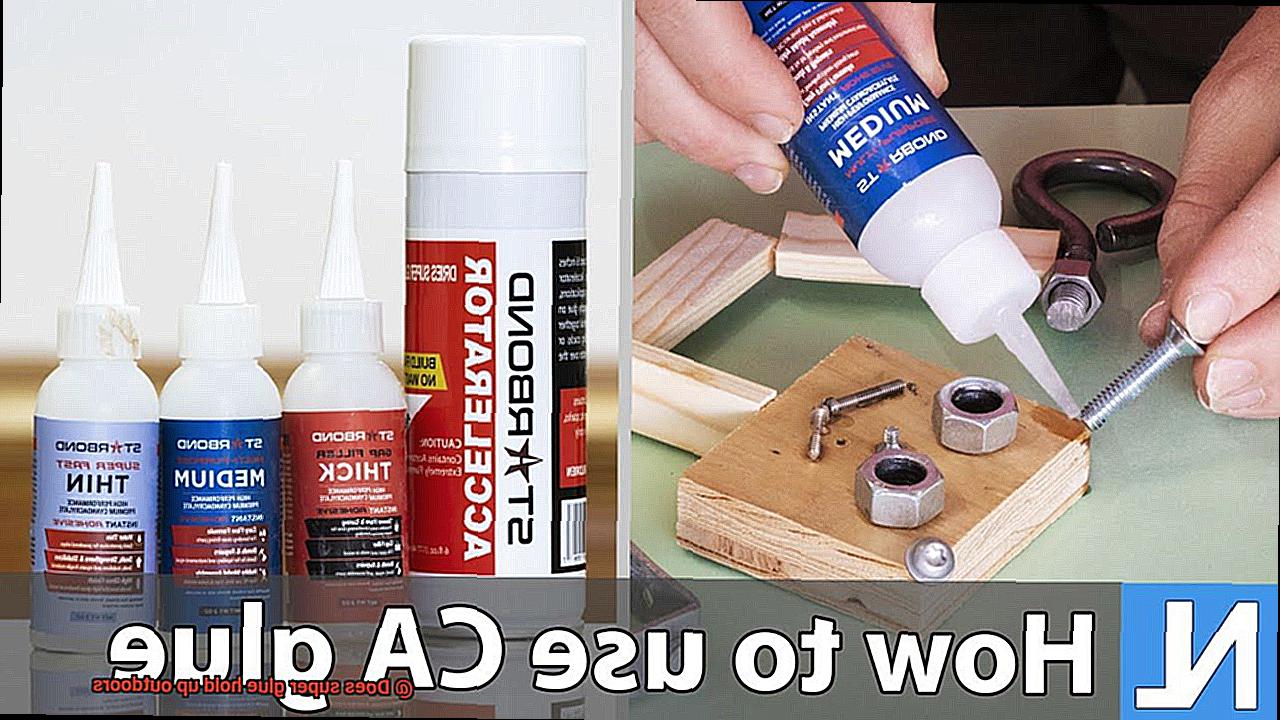
Exposure to Weather Elements
But how does it stand up against the unpredictable forces of Mother Nature? In this blog post, we’ll explore the impact of exposure to weather elements on the performance of super glue outdoors.
Temperature: The Good, the Bad, and the Melty
Super glue may be a superhero in the bonding world, but extreme temperatures can be its kryptonite. In scorching heat, it can become softer than ice cream on a hot summer day, leading to weakened or broken bonds. Conversely, freezing temperatures can make it as brittle as grandma’s cookies, rendering it ineffective. To ensure optimal performance, always check the specific temperature range for your chosen super glue.
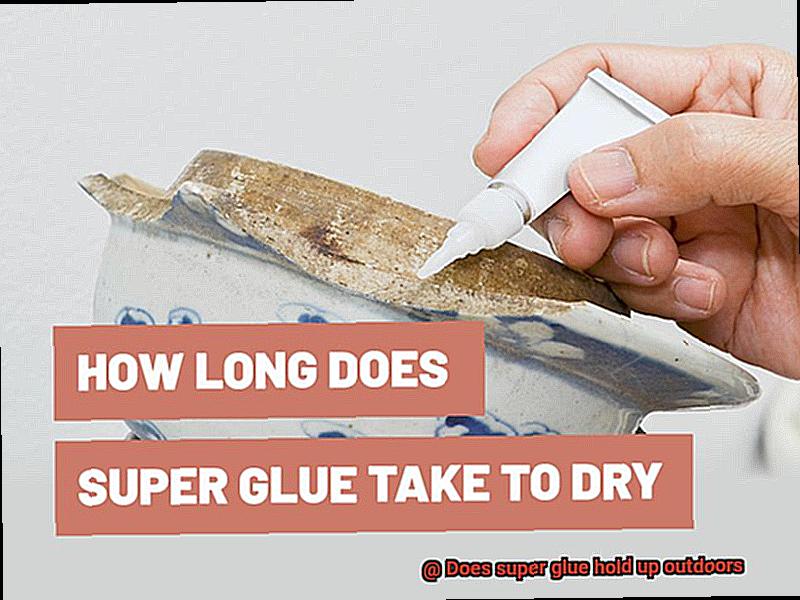
Humidity: Slow and Steady Wins the Bond
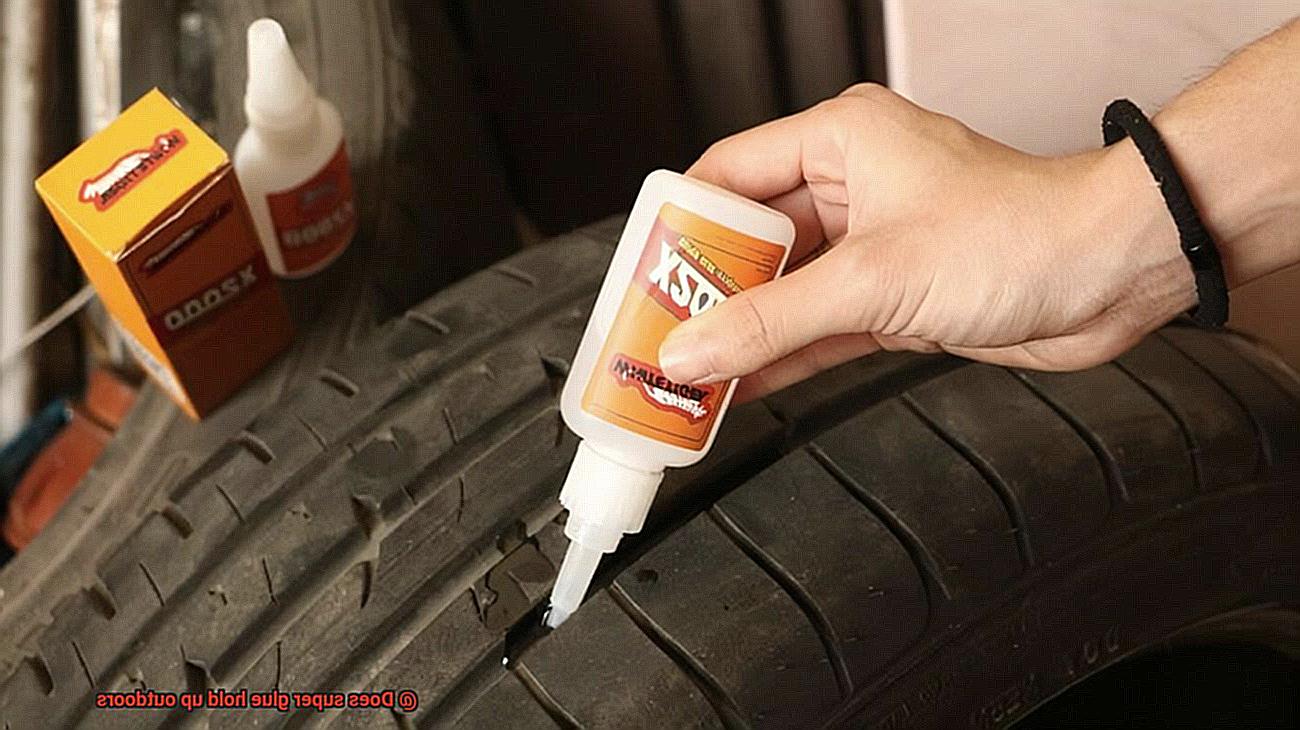
High humidity levels can throw a wrench into your bonding plans. The curing process may take longer as moisture in the air slows down the glue’s setting time. To conquer this challenge, make sure the application area is dry and moisture-free for stronger and faster bonds.
UV Radiation: Sunscreen for Your Glue
Just like our skin needs protection from harmful UV rays, so does super glue. Continuous exposure to sunlight’s UV radiation can weaken certain glues over time. Opt for UV-resistant formulas or consider additional protective measures like sealants to keep your bonds strong and durable.
Wind and Rain: The Test of Strength
Mother Nature’s dynamic duo – wind and rain – can put your super glue bonds to the ultimate test. Strong gusts can dislodge poorly secured surfaces, while heavy rain or prolonged exposure to moisture can weaken bonds. Ensure proper support and protection against these elements to keep your projects intact.
Preparing the Surface Before Applying Adhesive
In this comprehensive guide, we will delve into the crucial steps of preparing a surface before applying adhesive in an outdoor setting. From thorough cleaning and strategic sanding to the power of degreasing and roughening, we’ve got you covered. So gear up and prepare to triumph over any adhesive challenge that comes your way.
Step 1: Cleanliness is Paramount:
Before anything else, ensure that your surface is immaculately clean. Dirt, debris, moisture, or contaminants can cripple the bonding process. Banish grease, oil, or grime with a mild detergent or soap solution. Rinse the surface thoroughly with clean water and allow it to dry completely before proceeding.
Step 2: Sanding for Superior Grip:
Smooth or glossy surfaces may not provide enough traction for the adhesive to work its magic. To ensure an unyielding bond, lightly sand the surface to create a rugged texture. Employ fine-grit sandpaper or an abrasive pad in a circular motion. Remember, a gentle touch is key.
Step 3: The Power of Degreasing:
In the wild realm of the outdoors, surfaces are often plagued by oils, waxes, and other foes determined to sabotage your adhesive’s performance. Counter their advances by wiping the surface with a suitable degreasing agent like isopropyl alcohol or acetone. Soak a clean cloth or cotton ball in the chosen solvent and gently eradicate any lingering oils or grease.
Step 4: Roughening – Unleash the Beast Within:
For surfaces that refuse to yield their smoothness or porosity, more drastic measures are required. Unleash the beast within by utilizing a specialized etching solution or creating minuscule scratches with coarse-grit sandpaper. The goal is to provoke microscopic grooves and roughness that will allow the adhesive to penetrate and adhere with unwavering tenacity.
Step 5: Priming for Perfection:
Certain materials, such as resilient plastics or formidable metals, demand an extra layer of preparation before succumbing to the adhesive’s might. Prime these indomitable surfaces with a specialized primer, carefully selected to enhance bond strength through a chemical reaction that improves surface compatibility. Consult the manufacturer’s instructions or enlist professional advice to choose the ideal primer for your specific conquest.
Different Brands and Formulations of Super Glue
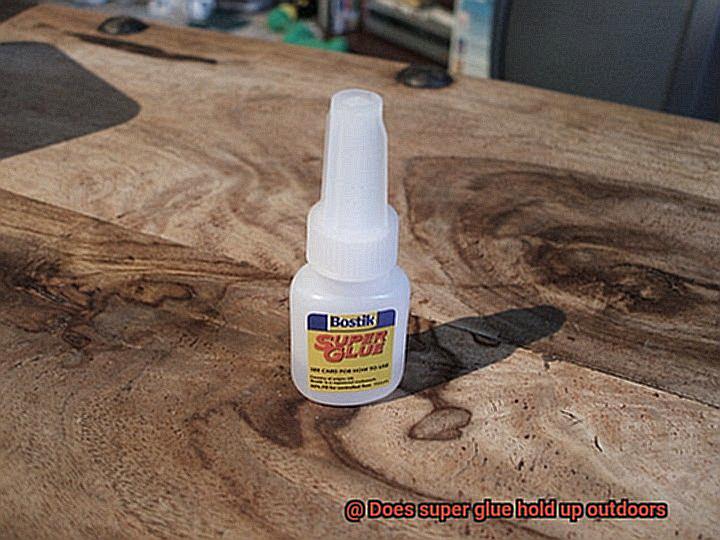
Super glue, also known as cyanoacrylate adhesive, is a powerful bonding agent that is widely used for various applications. When it comes to choosing the right super glue for your needs, it’s important to consider different brands and formulations that can offer the best performance. In this article, we’ll explore some of the top brands in the market and the formulations they offer.
Loctite and Gorilla Glue are two well-known brands that have gained a reputation for producing high-quality super glues. Loctite’s outdoor formulas are specifically designed to withstand outdoor conditions. They are resistant to moisture, temperature changes, and UV rays, making them perfect for outdoor use. These formulas provide a strong bond that can stand up to rain, sunlight, and other elements.
Gorilla Glue is another brand that excels in outdoor applications. Their super glues are weatherproof and resistant to water and extreme temperatures. Whether you’re repairing outdoor furniture or working on a project in the garden, Gorilla Glue has got you covered.
While Loctite and Gorilla Glue are excellent options, there are other brands to consider as well. It’s important to read product labels carefully to ensure you’re getting a super glue that can handle the great outdoors. Look for keywords such as “weatherproof,” “water-resistant,” “UV-resistant,” or “outdoor use” to determine if a particular super glue is suitable for your needs.
Formulations also play a crucial role in determining the performance of super glue in outdoor settings. Some super glues have special additives or modifiers that enhance their resistance to moisture and temperature changes. These formulations are ideal for tough outdoor jobs. Keep in mind that different materials may require specific super glue formulations for optimal results.
Specialized Outdoor Adhesives
When it comes to outdoor projects, using the right adhesive can mean the difference between success and failure. While super glue may seem like a reliable choice for many applications, specialized outdoor adhesives are the true superheroes when it comes to conquering the challenges of the great outdoors. In this blog post, we will dive into the world of specialized outdoor adhesives and explore why they are preferable to super glue for outdoor applications.
Weatherproof Warriors:

Specialized outdoor adhesives are formulated with stronger and more durable ingredients than regular super glue or general-purpose adhesives. These weatherproof warriors are specifically designed to withstand the harsh conditions of the outdoors. They can stand up to extreme temperatures, moisture, UV rays, and other environmental factors that would leave ordinary adhesives trembling in fear.
Versatile Applications:
From repairing outdoor furniture to bonding garden ornaments, securing outdoor signs or labels, and even fixing kayaks and surfboards, specialized outdoor adhesives have a wide range of applications. They provide a strong bond that can withstand the stresses and strains of outdoor use, ensuring that your items stay securely in place even in challenging conditions.
The Elements Hold No Power:
One of the key advantages of specialized outdoor adhesives is their ability to withstand the elements. These adhesives are weatherproof and resistant to water, heat, cold, and sunlight. They can handle temperature fluctuations without losing their bond strength or breaking down over time. This durability ensures that your outdoor projects will stand strong against whatever nature throws their way.
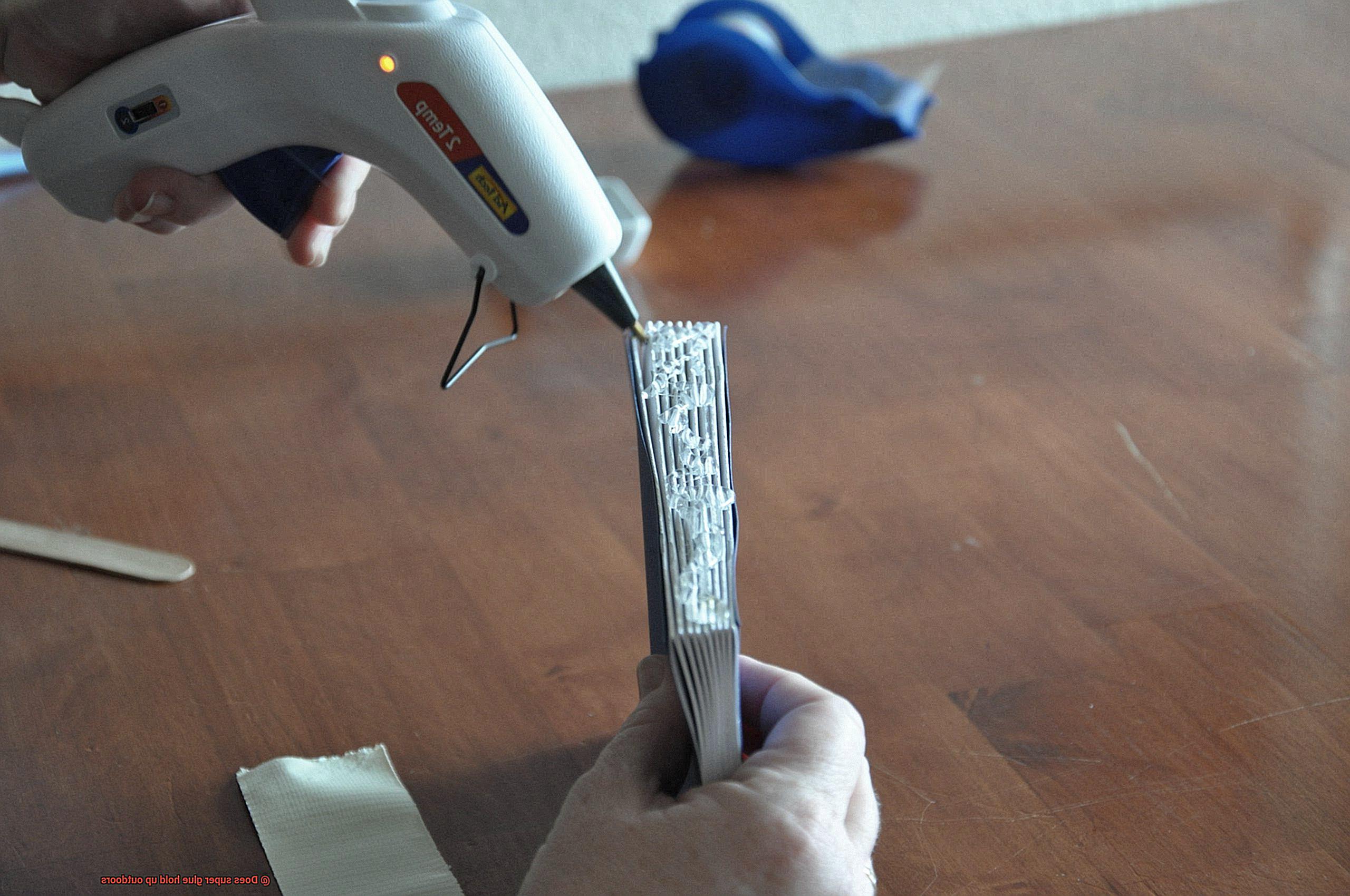
Additional Features:
Some specialized outdoor adhesives go above and beyond with extra features. Flexibility allows for movement without compromising the bond, making them ideal for applications where flexibility is essential. Paintable options give you the freedom to match your project’s color scheme or make adjustments as needed, providing a seamless and professional finish.
Invest in Longevity:
While super glue may work for some outdoor applications, it may not provide the same level of durability and longevity as specialized outdoor adhesives. Super glue may break down more easily when exposed to the elements and cannot withstand extreme temperatures or prolonged exposure to moisture. To ensure a reliable and long-lasting solution for your outdoor adhesive needs, it’s recommended to invest in specialized outdoor adhesives that are specifically formulated for these conditions.
h1tbjyd2qjA” >
Also Read: Is Super Glue Waterproof? – Glue Things
Conclusion
In conclusion, the answer to the question “Does super glue hold up outdoors?” is a resounding yes. However, its performance in outdoor settings depends on a multitude of factors. Super glue, also known as cyanoacrylate adhesive, is a versatile and lightning-fast adhesive that forms an unbreakable bond by swiftly reacting with moisture in the air.
When it comes to outdoor applications, super glue truly shines on non-porous surfaces like metal and plastic. Its grip is unyielding and secure. However, caution should be exercised when using it on porous materials such as wood or fabric. These absorbent surfaces can gradually weaken the bond over time as they soak up moisture. In these cases, opting for specialized outdoor adhesives like epoxy or polyurethane is a wiser choice.
The effectiveness of super glue in outdoor environments is also influenced by various external factors. Temperature fluctuations, humidity levels, UV radiation, wind, and rain all play their part in determining its durability. Extreme temperatures can put strain on the bond’s strength while high humidity slows down the curing process. The relentless UV radiation emitted by sunlight can gradually erode certain glues over time.
To ensure optimal bonding outdoors, meticulous surface preparation is paramount. Surfaces must be meticulously cleaned and rid of any dirt or grease before applying the adhesive. Sanding or roughening the surface enhances traction for better adhesion. In some cases, primers may be necessary to bolster bond strength on specific materials.
While super glue remains a reliable choice for many outdoor projects, there are specialized outdoor adhesives available that offer even greater durability and resistance to environmental conditions. These exceptional adhesives are formulated with robust ingredients specifically designed to withstand the harsh elements of nature.
In conclusion, while super glue undeniably holds up outdoors in numerous scenarios, it’s crucial to consider both the material being bonded and the environmental conditions at hand.


